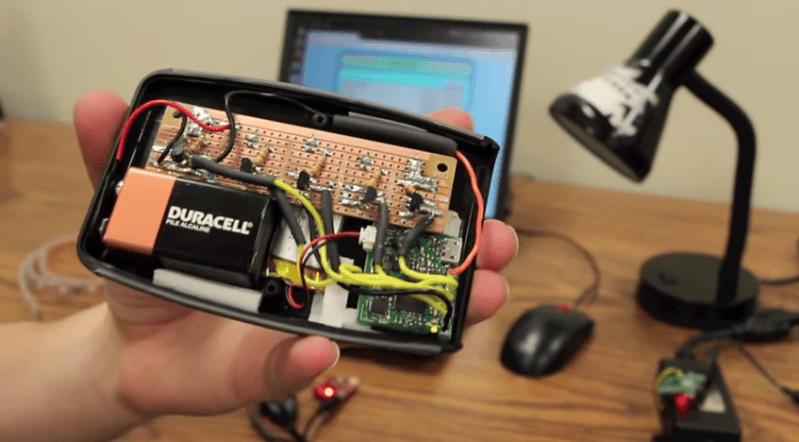We’re no strangers to home automation projects around here, but it’s not often that you see one described in this much detail. [Paul] designed a custom home automation system with four teammates for an undergraduate thesis project.
The system is broken into two main components; the server and the peripherals. The team designed their peripherals from early prototypes of an upcoming ArduIMU v4 measurement unit. They removed all of the default sensors to keep costs down and reduce assembly time. The units can them be hooked up to various peripherals such as temperature sensors, mains relays, RGB color strips, etc.
The central management of the system is performed using a web-based user interface. The web server runs on Java, and interacts with the peripherals wirelessly. Basic messages can be sent back and forth to either read the state of the peripherals or to change the state. As far as the user is concerned, these messages appear as simple triggers and actions. This makes it very simple to program the peripherals using if, then, else logic.
The main project page is a very brief summary of what appears to be a very well documented project. The team has made available their 182 page final report (pdf), which goes into the nitty-gritty details of the project. Also, be sure to watch the demonstration video below.
















Interesting, but the pdf describes how it takes on the order of tens of seconds to turn things on and off, citing the slowness of the raspberry pi as the reason, only suggesting their own lack of ‘optimisations’ as a factor.
This can’t be correct. It seems they put more thought into cutting their demo video to disguise this shortcoming rather than spend time optimising their code! Not something I’d expect of university students really.
Hi Stu,
Actually, we achieved significant speedup by switching the server to an x86-based laptop instead of the RPi. We likely could have made the system work more expeditiously with the RPi by modifying the web server/GUI component, but limited time constraints forced us to simply upgrade our base station hardware to the x86 laptop you see in the video.
It is sad that Hackaday published this article right after our Kickstarter campaign ended.
Hopefully, this procrastination was not done on purpose. Anyways, this is the link for the Kickstarter Campaign. We will relaunch it soon.
https://www.kickstarter.com/projects/494937902/arduimu-v4-an-arduino-based-integrated-measurement
We even developed a heart pulse monitor with the ArduIMU V4
https://drive.google.com/file/d/0B1MNBpayLZjtYWN1Sm5KYUtycGM/edit?usp=sharing
Yeah, they must have screwed up something really bad to have that amount of latency.
Pretty neat start. I’m guessing that the idea is to offer people a full low-cost home automation system, or instructions to build their own? I’d love to see the system set up with more sensors, sensors triggering actions and data logging.